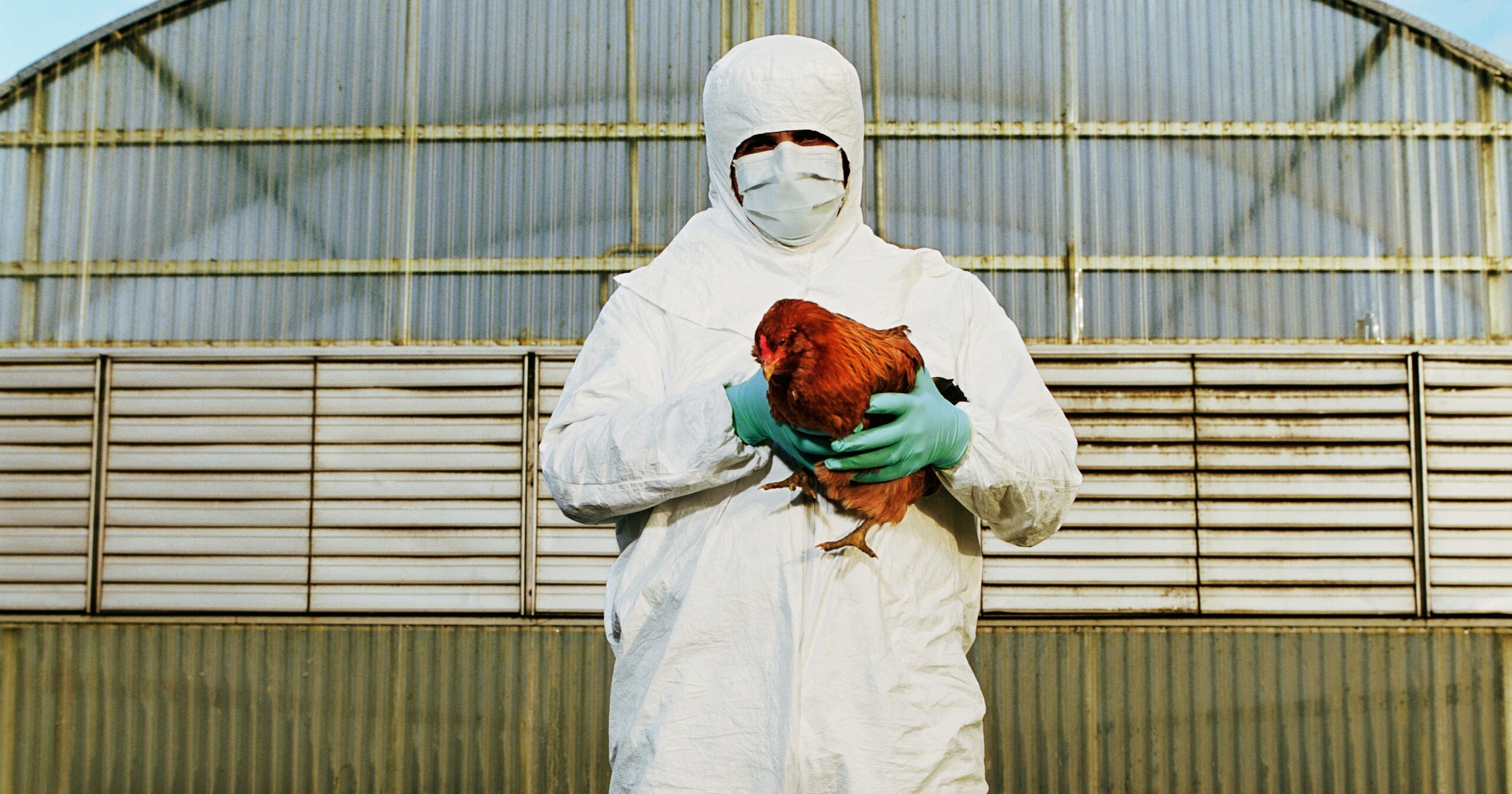A viral strain of avian influenza arrived in the United States in early 2022 and has continued to wreak havoc on commercial poultry and farms across the US. The disease has affected more than 58 million commercial poultry and backyard flocks, according to the Centers for Disease Control and Prevention (CDC). More recently, on March 25, the virus officially reached cattle, with unpasteurized milk testing positive for avian influenza in Texas, Kansas, and possibly New Mexico, per the US Department of Agriculture (USDA).
The avian flu has also spread worldwide, impacting animals in Europe, Asia, and Africa, Reuters reports. Avian flu has predominantly affects wild birds (especially waterfowl) and poultry (e.g. chickens, turkeys, pheasants, quail, domestic ducks, geese, and guinea fowl), according to the USDA. Direct exposure of farmed birds to wild birds (which are permanently infected) is a likely transmission route of the virus, according to the World Organisation for Animal Health.
But as the disease has spread to cattle, so has concern about human transmission. Thus far, there have been three human reports of avian influenza A(H5N1) in the United States, per the CDC. While humans are not typically infected by the virus, Tedros Adhanom Ghebreyesus, director general of the World Health Organization (WHO), said “we cannot assume that will remain the case,” at a 2023 press conference. More recently, former CDC director, Robert Redfield, warned of a “bird flu pandemic”. To stay informed and protected, experts say we should be aware of a few key pieces of information. Here’s everything you need to know about bird flu.
Experts Featured in This Article:
Amesh Adalja, MD, is an infectious disease expert and senior scholar at the Johns Hopkins Center For Health Security.
What Is Bird Flu?
The CDC defines bird flu as “the disease caused by infection with avian (bird) influenza (flu) Type A viruses.” In animals, bird flu is deadly and contagious, and it naturally spreads “among wild aquatic birds worldwide and can infect domestic poultry and other bird and animal species,” per the CDC. The virus is transmitted through bird saliva, nasal secretions, and feces. Birds can also become infected if they make contact with a surface that’s been contaminated with the virus from another infected bird.
Can Humans Get Bird Flu?
Yes, but the risk remains low. “The people concerned should be those individuals who work on dairy farms, poultry farms, or drink, unpasteurized milk. The rest of the the general public have a very low risk,” says infectious disease expert, Amesh Adalja, MD, a senior scholar at the Johns Hopkins Center For Health Security.
That said, there have been a few instances in world history in which the virus has spread among humans. “The concern is that some strains of avian influenza will have or develop the capacity to spread efficiently between humans in the manner of the 1918 H1N1 influenza pandemic, which was an avian-origin influenza virus,” Dr. Adalja says. An estimated 500 million people, or one-third of the world’s population, became infected with the virus and roughly 50 million people worldwide died from it, per the CDC.
Bird flu shows potential for another deadly outcome if it continues to spread. “There has been a mortality rate of about 50% in the almost 900 people around the world who have been infected with bird flu between 2003 and 2024,” points out Yale Medicine infectious diseases specialist, Scott Roberts, MD, in an interview with the school. That’s why Dr. Roberts expressed worry for the years ahead.
What Are Bird-Flu Symptoms in Chickens and Other Animals?
Infected cattle are reportedly experiencing low lactation and appetite. “We hadn’t seen anything like it before,” Texas Department of Agriculture Commissioner Sid Miller told AP News. “It was kind of like they had a cold.” If you’re concerned your bird or flock has been impacted by avian flu, here are a few signs and symptoms you should look out for, according to the Department of Labor’s Occupational Safety and Health Administration (OSHA):
- Lack of energy, appetite, and coordination
- Purple discoloration or swelling of various body parts
- Diarrhea
- Nasal discharge
- Coughing
- Sneezing
- Reduced egg production and/or soft-shelled or misshapen eggs
- Sudden death
Are There Signs of Bird Flu in Humans?
Again, the risk of humans being infected with bird flu remains low for now. But symptoms in humans can run the gamut from red eyes or mild flulike upper-respiratory symptoms to fever, shortness of breath, body aches, and even pneumonia, per the CDC.
If you come in contact with infected birds and become sick within 10 days of exposure, the CDC advises that you isolate at home and notify the local or state health department. Lab testing is needed to confirm a diagnosis. Treatment typically includes antiviral medicine, such as oseltamivir (Tamiflu) or zanamivir (Relenza), according to the Mayo Clinic.
The best prevention method against bird flu is to avoid exposure altogether. A few preventative guidelines from the CDC include:
- Avoid direct contact with wild birds, and observe them from a distance.
- Avoid unprotected contact with domestic birds that look sick or have died.
- Do not touch surfaces that may be contaminated with saliva, mucous, or feces from wild or domestic birds.
- If you must handle sick birds because of your job, use safety measures like gloves, eye protection, and frequent handwashing.
Should You Stop Eating Poultry, Eggs, or Milk?
No. Adequately cooked poultry and eggs are safe to eat though, Dr. Adalja tells PS. Avian influenza is not a food-borne illness, meaning poultry and eggs that are properly prepared and cooked are safe to eat, per the USDA. Proper food-handling recommendations include cooking poultry to an internal temperature of 165°F and washing your hands with warm water and soap before and after handling poultry and eggs. That said, Dr. Adalja does recommend avoiding raw or unpasteurized milk – not just for avian influenza purposes, but for a whole host of infectious threats.
– Additional reporting by Chandler Plante
Alexis Jones is the senior health and fitness editor at POPSUGAR. Her passions and areas of expertise include women’s health and fitness, mental health, racial and ethnic disparities in healthcare, and chronic conditions. Prior to joining PS, she was the senior editor at Health magazine. Her other bylines can be found at Women’s Health, Prevention, Marie Claire, and more.
Chandler Plante is an assistant editor for POPSUGAR Health & Fitness. Previously, she worked as an editorial assistant for People magazine and contributed to Ladygunn, Millie, and Bustle Digital Group. In her free time, she overshares on the internet, creating content about chronic illness, beauty, and disability.




